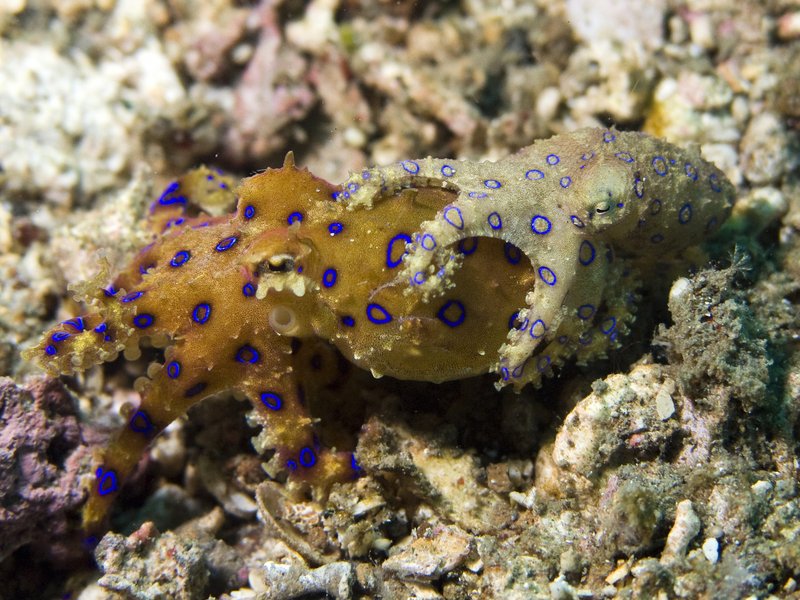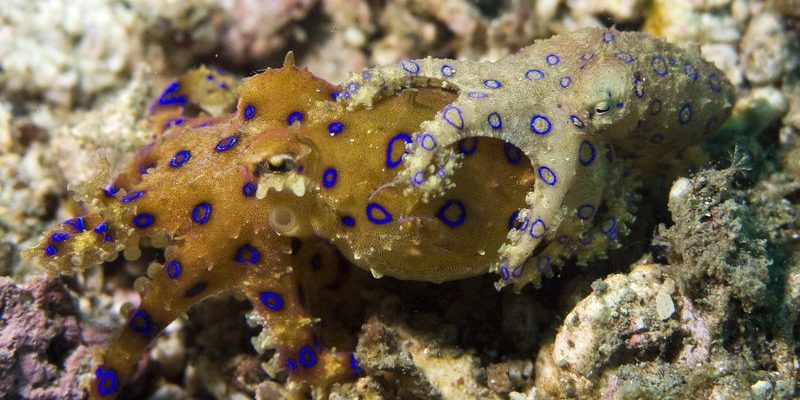
When it comes to breeding and reproduction, the blue-ringed octopus has a story that’s as colorful as its appearance. From courtship to the care of their young, each step is essential for the continuation of this remarkable species. In this article, we’ll dive deep into the world of blue-ringed octopus reproduction, breaking down their reproductive process into easy-to-understand parts.
The Blue-Ringed Octopus: An Overview
Before we jump straight into breeding, let’s get familiar with our main character—the blue-ringed octopus. These fascinating marine creatures belong to the genus *Hapalochlaena* and are known for their striking blue rings that emerge when they feel threatened. But these rings aren’t just for show; they play a crucial role in their survival.
Blue-ringed octopuses are relatively small, averaging around 4-5 inches in size. Despite their tiny stature, they’re one of the most venomous animals in the world. Their venom contains a potent toxin called tetrodotoxin, which can be deadly to predators and humans alike. This remarkable defense mechanism means they don’t have many natural enemies, allowing them to thrive in their habitats.
Interestingly, blue-ringed octopuses inhabit shallow waters in the Pacific and Indian Oceans, often hiding in crevices or among rocks and coral. As we explore their breeding habits, it’s important to remember that their unique adaptations help them navigate the challenges of reproduction in a vast ocean environment.
The Mating Ritual: Courtship Behavior
Here’s the thing: the courtship process of blue-ringed octopuses is anything but ordinary. Mating typically occurs during the night, a time when these creatures feel more secure and less exposed to predators. Male blue-ringed octopuses are known to use a specialized arm, called a hectocotylus, which helps them transfer sperm to the female.
During the courtship process, males often display their vibrant blue rings to attract females. This visual display serves two purposes: it shows off their health and fitness while also warning other males to keep their distance. Males use dance-like movements to woo the females, often wrapping their tentacles around them in a gentle embrace.
Once a pair is ready to mate, the male uses his hectocotylus to transfer sperm to the female. This transfer typically happens quickly and can be over in just a couple of minutes. After mating, the male often detaches and swims away, leaving the female to manage the next steps on her own.
Egg Laying: A Labor Of Love
After mating, the female blue-ringed octopus goes through a remarkable transformation as she prepares to lay her eggs. Here’s where it gets really interesting: the female lays between 50 and 100 eggs, which she attaches to a safe spot, often in secluded crevices or under rocks.
The female takes this responsibility incredibly seriously. She tends to her eggs, blowing water over them to keep them clean and oxygenated. During this time, she won’t eat, focusing solely on ensuring her eggs’ survival. This self-sacrifice is a testament to her dedication, and in a way, it’s a glimpse into the strong maternal instincts that some creatures possess.
The incubation period for blue-ringed octopus eggs lasts around 2 to 3 months, depending on environmental conditions like water temperature and quality. Once the eggs hatch, the tiny hatchlings emerge, resembling miniature versions of their parents but without the striking blue rings.
The Life Cycle of Hatchlings
Once the eggs hatch, the newly emerged baby blue-ringed octopuses are on their own. They’re free-swimming and have to fend for themselves right from the start. During this stage, they rely on plankton and small crustaceans for food. It’s quite a challenging time, as many don’t survive the dangers of the open ocean.
These hatchlings are incredibly vulnerable, facing threats from predators and environmental changes. Over time, they grow and develop their iconic features, including their beautiful blue rings. The transition from hatchling to mature octopus usually takes about six months, after which they’ll be ready to mate and start the cycle all over again.
Here’s a fun tidbit: blue-ringed octopuses reach sexual maturity quickly, often within just six months to a year after hatching. This rapid life cycle means they can reproduce multiple times in a relatively short lifespan, which is typically only 1 to 2 years.
Threats to Reproduction and Conservation
Despite their resilience, the blue-ringed octopus faces various threats that impact their population and reproductive success. Habitat destruction, pollution, and climate change are significant issues affecting their environments. Coastal development, for instance, can destroy the rocky habitats where they lay their eggs and hide from predators.
Overfishing also poses a risk, as it can alter the balance of ecosystems and reduce the availability of prey. As apex predators in their environment, changes in their food sources can directly impact their ability to reproduce successfully.
Conservation efforts are essential to protect these unique creatures and their habitats. By raising awareness about the threats they face, we can work towards creating a safer environment for blue-ringed octopuses and ensure they continue to thrive in our oceans.
The breeding and reproduction of the blue-ringed octopus is a mesmerizing journey marked by unique behaviors and challenges. From the elaborate courtship dance to the dedicated care of their eggs, these tiny creatures exhibit remarkable adaptations that ensure their survival. However, as we’ve discussed, they are not invincible. As we learn more about them and the challenges they face, we have the opportunity to contribute to their conservation.
Next time you come across a blue-ringed octopus, take a moment to appreciate not just their beauty but also the intricate life they lead beneath the waves. Understanding their reproduction can help us appreciate the delicate balance of ocean ecosystems and the need to protect them for future generations. So let’s celebrate these little wonders of the sea and do our part to keep their stories alive.

